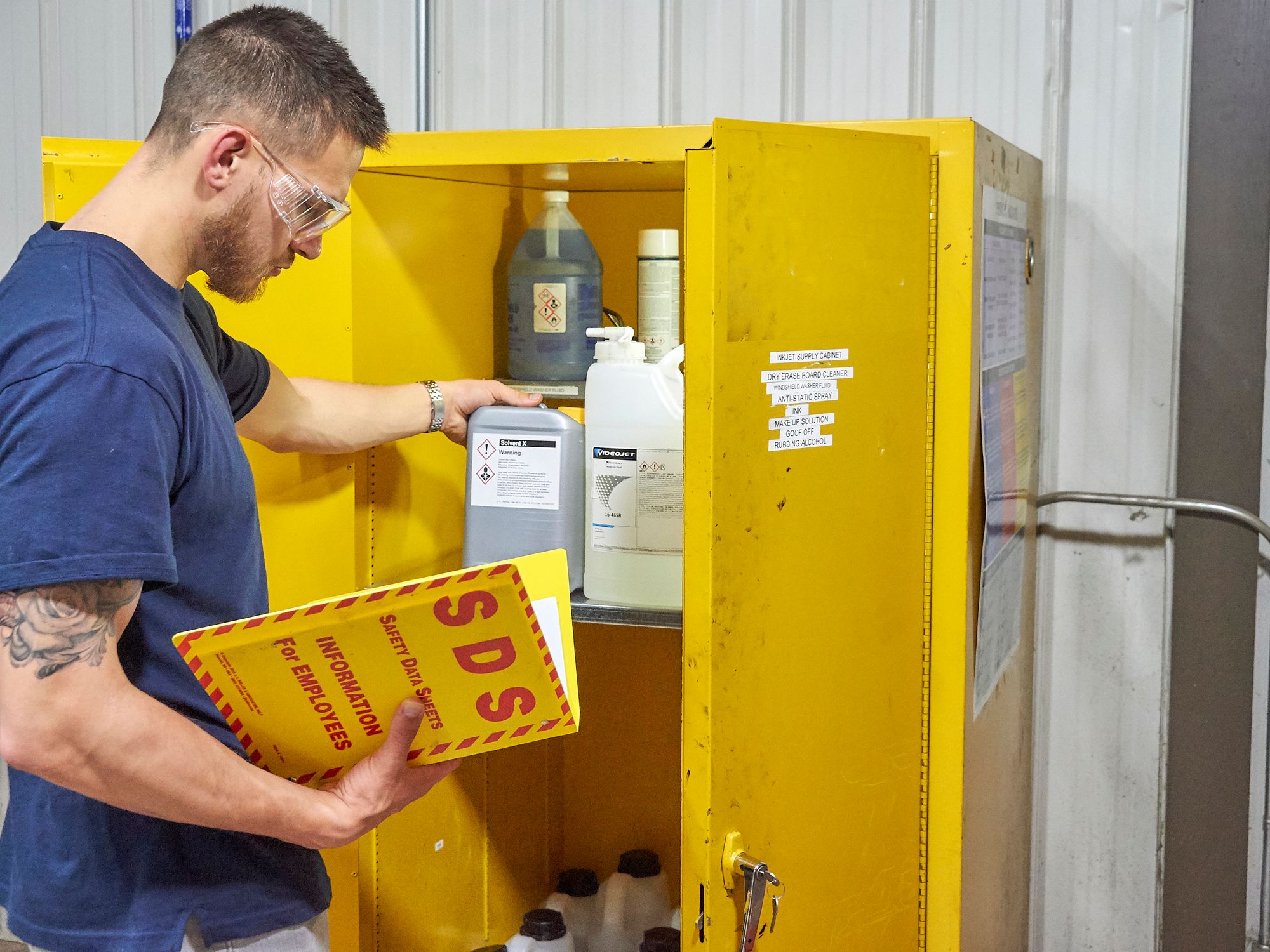Sections 9 and 10

- Section 9 identifies physical and chemical properties associated with the substance or mixture.
- Section 10 describes the reactivity hazards of the chemical and the chemical stability information.
Section 9. Physical and chemical properties
This section identifies physical and chemical properties associated with the substance or mixture. The minimum required information consists of:
- Physical state
- Color
- Odor (includes odor threshold)
- Melting point/freezing point
- Boiling point (or initial boiling point or boiling range)
- Flammability
- Lower and upper explosion limit/flammability limit
- Flash point
- Auto-ignition temperature
- Decomposition temperature
- pH
- Kinematic viscosity
- Solubility
- Partition coefficient n-octanol/water (log value)
- Vapor pressure (includes evaporation rate)
- Density and/or relative density
- Relative vapor density
- Particle characteristics
The SDS may not contain every item on the above list because information may not be relevant or is not available. When this occurs, a notation to that effect must be made for that chemical property. Manufacturers may also add other relevant properties, such as the dust deflagration index (Kst) for combustible dust, used to evaluate a dust’s explosive potential.
Section 10. Stability and reactivity
This section describes the reactivity hazards of the chemical and the chemical stability information. This section is broken into three parts: reactivity, chemical stability, and other. The required information consists of:
Reactivity
- Description of the specific test data for the chemical(s). This data can be for a class or family of the chemical if such data adequately represent the anticipated hazard of the chemical(s), where available.
Chemical stability
- Indication of whether the chemical is stable or unstable under normal ambient temperature and conditions while in storage and being handled.
- Description of any stabilizers that may be needed to maintain chemical stability.
- Indication of any safety issues that may arise should the product change in physical appearance.
Other
- Indication of the possibility of hazardous reactions, including those associated with foreseeable emergencies.
- List of all conditions that should be avoided (e.g., static discharge, shock, vibrations, or environmental conditions that may lead to hazardous conditions).
- List of all classes of incompatible materials (e.g., classes of chemicals or specific substances) with which the chemical could react to produce a hazardous situation.
- List of any known or anticipated hazardous decomposition products that could be produced because of use, storage, or heating. (Hazardous combustion products should also be included in Section 5 (Fire-Fighting Measures) of SDS.)
